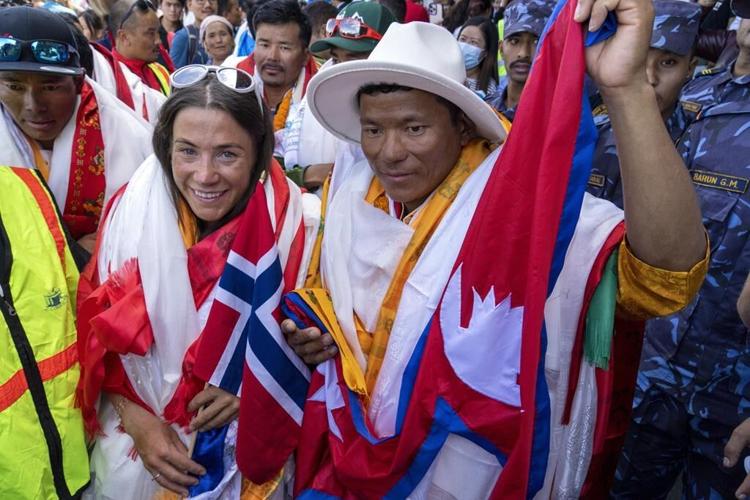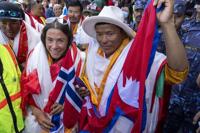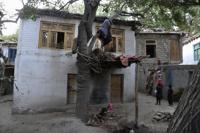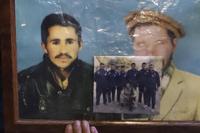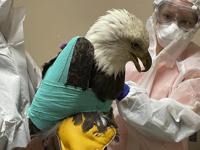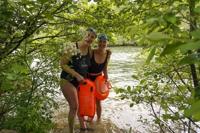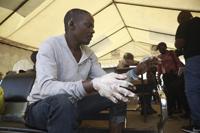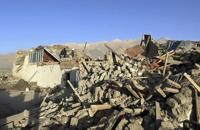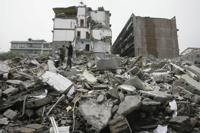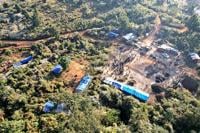ISLAMABAD (AP) — An investigation has been launched into the death of a Pakistani porter near the peak of the world's most treacherous mountain, a Pakistani mountaineer said Saturday, following allegations that dozens of climbers eager to reach the summit had walked past the man after he was gravely injured in a fall.
The accusations surrounding events on July 27 on , overshadowed a record established by Norwegian climber and her Sherpa guide, Tenjin. By climbing K2 that day, they became the world's fastest climbers,
Harila rejected any responsibility for the death of the porter, Mohammed Hassan, a 27-year-old father of three who slipped and fell off a narrow trail in a particularly dangerous area of K2 known as the bottleneck. In an Instagram post Friday, she wrote that she felt “angry at how many people have been blaming others for this tragic death” and that no one was at fault.
Harila was defending herself against allegations from two other climbers who were on K2 that day, Austrian Wilhelm Steindl and German Philip Flaemig. The pair had aborted their climb because of difficult weather conditions, but said they reconstructed the events later by reviewing drone footage.
The footage showed dozens of climbers passing a gravely injured Hassan instead of coming to his rescue, Steindl told The Associated Press on Saturday. He alleged that the porter could have been saved if the other climbers, including Harila and her team, had given up attempts to reach the summit.
Karrar Haidri, secretary of the Pakistan Alpine Club, a sports organization that also serves as the governing body for mountaineering in Pakistan, said an investigation into Hassan's death is underway. It is being conducted by officials in the Gilgit-Baltistan region, which has jurisdiction over K2, Haidri said.
Steindl, the Austrian climber, said the drone footage shows one man trying to rub Hassan's chest, trying to keep him warm and alive somehow. "You can see that the man is desperate,” Steindl said.
“We know by now that this was his friend, also a Pakistani high altitude porter," Steindl said. “And what you also see in the drone footage is a line of 70 climbers marching towards the summit.”
“There is a double standard here. If I or any other Westerner had been lying there, everything would have been done to save them," Steindl said. “Everyone would have had to turn back to bring the injured person back down to the valley.”
Steindl also said that July 27 was the only day in this season on which conditions were good enough for mountaineers to reach the summit of K2, which explains why there were so many climbers eager to get to the top.
“I don’t want to kind of directly blame anybody," Steindl said. "I’m just saying there was no rescue operation initiated and that’s really very, very tragic because that’s actually the most normal thing one would do in a situation like that.”
Harila told Sky News that Hassan had been dangling from a rope, head down, after his fall at the bottleneck, which she described as “probably the most dangerous part of K2.” She said that after about an hour, her team was able to pull him back onto the trail.
At some point, she and another person from her team decided to continue to the top while another team member stayed with Hassan, giving him warm water and oxygen from his own mask, the climber said.
Harila said she decided to continue on to the summit because her forward fixing team also ran into difficulties, without giving any details in the interview.
Asked about Hassan’s gear, Harila said that he did not wear a down suit and he didn’t have gloves, nor did he have oxygen. “We didn’t see any sign of either a mask or oxygen tank,” she said.
In Hassan's home village of Tisar, friends and neighbors visited the family, offering prayers of condolence.
A childhood friend, Basharat Hussain, said Hassan had been determined to provide opportunities for his children that he never had, including an education. “He used to say ... ‘all my life I had to suffer, I had to work hard, I am working hard to give my children a good education’,” Hussain told AP.
Hussain said he was saddened by how his friend died. “I think this is the most dehumanizing event in my life,” he said, adding that he hopes “it will not happen in the future.”
Anwar Syed, the head of Lela Peak Expedition, the company that Hassan was working for, said he died about 150 meters (490 feet) below the summit. He said several people tried to help, providing oxygen and warmth, to no avail.
Syed said that because of the bottleneck's dangerous conditions, it would not be possible to retrieve Hassan's body and hand it to the family. He said his company had given money to Hassan's family and would continue to help, but did not elaborate.
Asked about Hassan's apparent lack of equipment, Syed said that the expedition company pays money to porters to buy gear and that Hassan was paid the agreed upon amount.
Steindl's fellow climber, Flaemig, alleged in an interview with the Austrian newspaper Der Standard that Hassan had no high-altitude experience. “He wasn't equipped properly. He did not have experience. He was a base camp porter and for the first time was picked to be a high-altitude porter. He wasn't qualified for this," Flaemig said.
Steindl visited Hassan's family and set up a crowd-funding campaign. After four days, donations reached close to 122,000 euros (almost $140,000), exceeding the target of 120,000 euros.
“I saw the suffering of the family,” Steindl told AP. "The widow told me that her husband did all this so that his children would have a chance in life, so that they could go to school.”
___
Grieshaber reported from Berlin.

